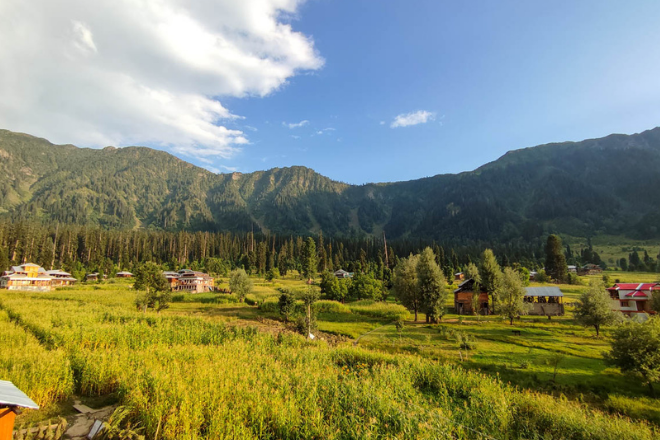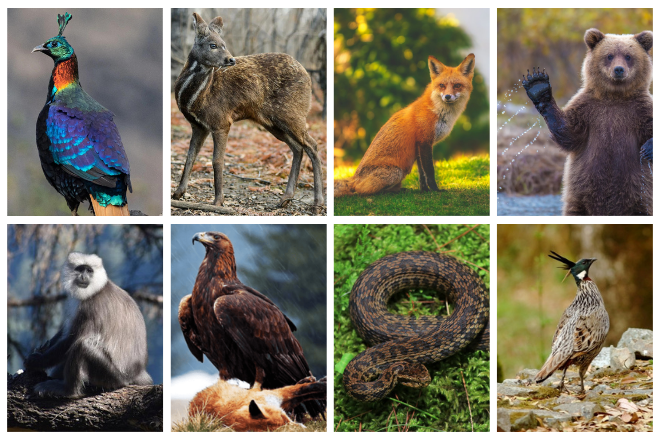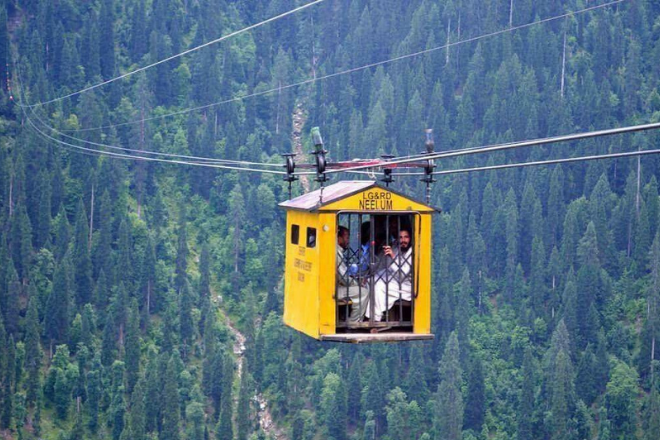
Arang Kel, often called the “Pearl of Neelum Valley,” is a picturesque village in the Azad Kashmir region under the Pakistani administration. Arang Kel’s altitude is nestled at 8,379 feet, this hidden gem offers a breathtaking blend of natural beauty and cultural charm.
Arang Kel’s location offers a breathtaking blend of towering peaks, vast meadows, and a serene atmosphere that feels untouched by modern life. Whether you’re seeking peace or adventure, Kashmir’s Arang Kel offers both in abundance.
Arang Kel is famous for its stunning natural beauty serene environment and peaceful setting. Some people might think it is situated in India due to Kashmir’s disputed territory but Arang Kel is in Pakistan. In case adventure seekers of natural landscapes are wondering, Nanga Parbat is not visible from Arang Kel; it’s located farther away.
Situated in the mountains, the weather of this region varies throughout the year. Summers are cool and pleasant, making it the perfect escape from the heat, while winters bring chilly temperatures, often accompanied by snowfall. The temperature can drop significantly at night, especially during winter, so visitors are advised to prepare accordingly. If you are planning for the Arang Kel hike, you need to know the climatic conditions of the area.
For the best experience, Arang Kel weather in June is particularly popular and appropriate to enjoy. Winter visits are also possible but be prepared for snow. Visitors should keep all the necessary clothing with them according to their decided months.
Related: The Northern Areas of Pakistan: True Nature’s Wonderland

Reaching Arang Kel trek requires either a chair lift ride or a hike from Kel village. The journey begins by road until Kel, where visitors can take the cable car or start the hike.
Route | Distance & Duration |
Islamabad to Arang Kel distance | 281 km |
Muzaffarabad to Arang Kel distance | 148 km |
Abbottabad to Arang Kel distance | 211 km |
Lahore to Arang Kel distance | 678 km |
Kel to Arang Kel | 2 km |
Arang Kel is a small, remote village, so it doesn’t have a specific “famous” dish that is widely recognized outside the region. For a variety of dishes and dining options, you can also find some hotels in Arang Kel Azad Kashmir and Restaurants in the region. However, the local cuisine features traditional Pakistani foods that are popular in the area.


Arang Kel is home to a range of wildlife, making it a hotspot for nature lovers. The surrounding forests are home to a variety of species. The area is also known for its beautiful flora, with colorful flowers dotting the landscape, especially during the
Wildlife Species | Habitat Type |
Himalayan Monal | Forested Areas, spot early morning |
Musk Deer (endangered) | Dense high-altitude forests, spot winter and early spring |
Red Fox | Forest and Meadows, spot during dusk |
Brown Bear (Rare Sights) | High Elevations, spot late summer |
Kashmir Gray Langur | Broadleaf forests around Arang Kel |
Golden Eagle | Open mountain regions around Arang Kel, spot early morning or late afternoon |
Himalayan Pit Viper (rare sights) | Forests, rocky slopes, grasslands |
Koklass Pheasant | Steep rocky terrains, bushy areas, spot early morning or late afternoon |
Arang Kel offers visitors plenty of activities to make their trip unforgettable. Adventure seekers can explore Arang Kel Valley by hiking, camping, or horse riding. The area is also perfect for nature photography, as every corner provides stunning views for beautiful captures.

Managed by the local government and supervised by the military, the Arang Kel cable car is an easy way to reach the beautiful hill station of Arang Kel. It covers about one kilometer and hangs 200 feet above the valley, giving you amazing views. It can carry 2 to 3 people at a time, saving a lot of effort compared to the one-hour hike.
Some visitors might not be able to hike for a longer time so in this case, choosing an alternative is the best option. Using the Arang Kel chairlift is also affordable, with prices between 160 and 230 Pakistani Rupees ($0.70 to $1). This makes it a great option for visitors who want to save time and enjoy a scenic ride on their way.
Visitors can find a variety of options, ranging from basic guesthouses to more comfortable lodges. Most places offer simple rooms with essential facilities like clean bedding and warm water. For a smooth visit to Arang Kel, it’s advisable to make your Arang Kel hotel booking in advance due to the limited accommodation options in the area.
These accommodations are often surrounded by beautiful natural landscapes, allowing guests to wake up to stunning views of the valley and forests. Many spots provide outdoor seating areas for relaxation, while others have traditional Kashmiri setups to give visitors an authentic local experience.

Here are some useful travel tips for Arang Kel:
Layered Clothing: Pack layers to adapt to varying temperatures. Include thermal wear, a fleece jacket, and a waterproof outer layer.
Waterproof Gear: Bring a waterproof jacket and pants. Rain is common, so it’s essential to stay dry.
Sturdy Footwear: Include durable hiking boots or shoes with good traction. They should be comfortable for long walks and uneven terrain.
Warm Accessories: Pack a hat, gloves, and a scarf. Even in summer, it can get chilly at higher altitudes.
Travel Backpack: Use a small, lightweight backpack for daily excursions. It should be easy to carry and fit your essentials.
Sleeping Gear: A lightweight sleeping bag or travel pillow can be useful if staying in basic accommodations.
Health Essentials: Include a basic first aid kit, personal medications, and any prescription drugs you need. Bring hand sanitizer and insect repellent.
Food and Water: Carry some non-perishable snacks and a reusable water bottle. You may not always have access to food and clean water.
Sun Protection: Pack sunscreen, sunglasses, and a wide-brimmed hat. The sun can be strong, especially at higher elevations.
Photography Gear: Bring a camera or smartphone for capturing the scenery. Also, pack extra batteries and memory cards.
Navigation Tools: Carry a map, compass, or GPS device. Cellular signals can be weak, so having offline navigation options is helpful.
Trash Bags: Pack a few small trash bags to dispose of waste and keep your gear clean.
Emergency Kit: Include a multi-tool, flashlight, and extra batteries. These can be handy in various situations.
Arang Kel is a beautiful spot for nature lovers and adventure seekers. The road to Arang Kel winds through scenic landscapes and rugged terrain. This makes it a memorable journey with stunning views along the way. With some careful planning and a spirit of adventure, you’ll have a great time exploring this charming village. Enjoy your trip and let Arang Kel’s beauty leave a lasting impression.
Guide to Pakistan is a valuable resource for discovering the country’s diverse attractions. It provides detailed information on various tourist spots, cultural sites, and natural landscapes. With insights on local customs, accommodations, and travel routes, it helps travelers explore Pakistan’s rich heritage and scenic beauty.
637, Street 34, DVs, Sector F, DHA Phase 1, Islamabad, Pakistan
info@guidetopakistan.pk
Phone : +92 3212224042